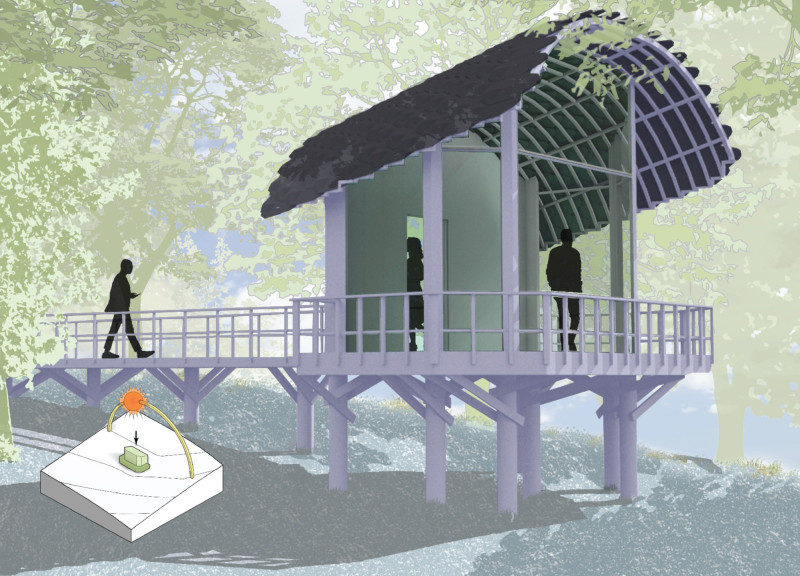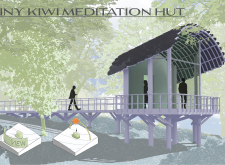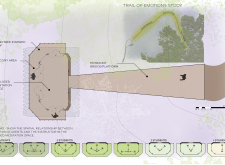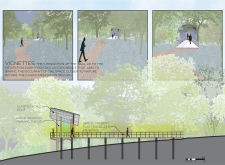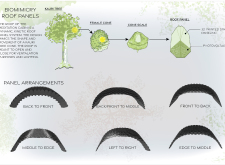5 key facts about this project
The Tiny Kiwi Meditation Hut is designed to enhance mindfulness in a natural setting. Located in a tranquil landscape, the hut serves as a space for meditation, focusing on creating a peaceful atmosphere. The design draws inspiration from the Kauri tree, integrating forms that encourage users to connect with their environment.
Concept and Spatial Organization
The design prioritizes tranquility and reflection. The layout is intentional, ensuring a smooth interaction between instructors and students during meditation sessions. An entrance defined by a bridge or platform invites visitors from the natural surroundings into the interior space, setting the stage for contemplation. This thoughtful organization helps users engage with their surroundings and prepare mentally for meditation.
Biomimicry and Roof Design
The roof is a key feature, designed to resemble the shape and movement of a Kauri tree cone. This dynamic roof is not only visually interesting but also practical, allowing airflow and natural light into the hut. This approach to design reflects a commitment to nature, using biomimicry to create an environment that supports meditation.
Materiality and Sustainability
The hut is built using 3D printed structural paneling, which allows for unique forms and shapes. Photovoltaic panels are incorporated into the design, emphasizing a commitment to energy efficiency and sustainability. These materials serve dual purposes, enhancing the visual appeal while also meeting practical needs.
Interior Atmosphere and Connection to Nature
Large windows are strategically placed to frame views of the surrounding landscape, allowing natural light to fill the space. This design choice enhances the connection between inside and outside, creating a bright and inviting atmosphere. The interplay of light and shadows fosters a relaxed setting that encourages users to reflect and meditate, supporting the overall vision of the hut.


